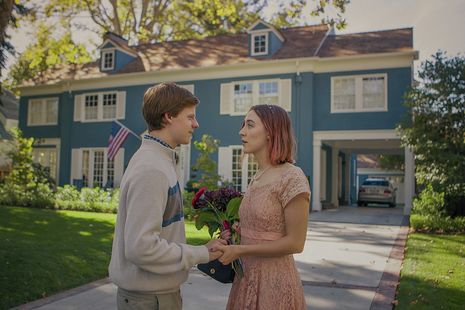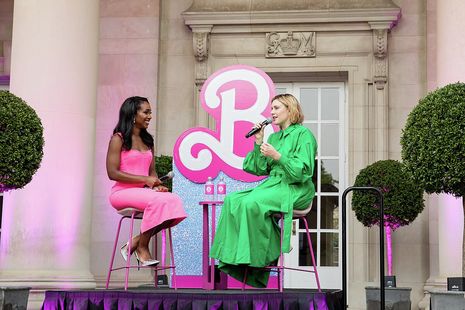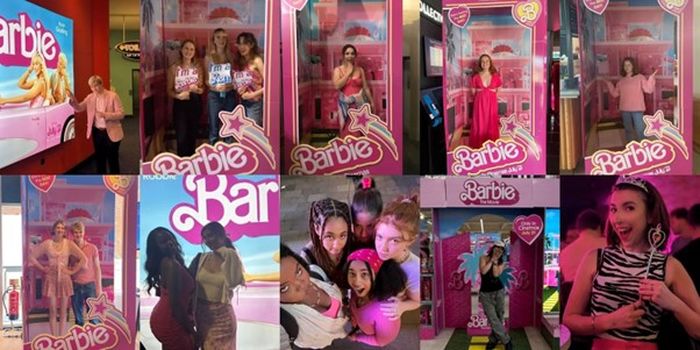There’s something about Greta
Olivia Townsend gives us her take on Greta Gerwig’s rise to prominence

“Women have minds and souls as well as hearts, ambition and talent as well as beauty; and I’m sick of being told that love is all a woman is fit for.” No doubt many readers can easily finish the lines uttered gut-wrenchingly by Saoirse Ronan’s Jo March in Little Women. This scene sits among a host of Greta Gerwig’s finest shots, frequently set to soundtracks of Taylor Swift and Phoebe Bridgers songs in beautifully edited TikToks. With Oscar nominations and exciting upcoming adaptations to her name, the rise of Greta Gerwig is quite evidently following the trail blazed by numerous iconic (and typically male) directors on their ascent to auteur status. Why has Gerwig been able to take such a firm hold of the hearts of her audiences? Looking at her last three films holds the answers.
“The fact so many viewers look to see themselves among these nineteenth-century women illustrates the power of Gerwig’s filmmaking”
Beneath the traditional standards of measuring directorial legacies, the personal impact of Gerwig’s work is setting her apart as an auteur. While her work is certainly not solely intended for female audiences, girlhood is a frequent theme in her directorial work which has shaped her appeal among dedicated viewers. Gerwig has crafted a tone which truly portrays the pain of being a teenage girl. Saoirse Ronan’s performance in Lady Bird encapsulates this perfectly; beyond being a simple coming-of-age narrative, it astutely represents the fraught relationship between teenage girls and their mothers.

We see Lady Bird navigate the awkwardness of first relationships, the tumult of high school friendships and the often clumsy attempts at finding your adolescent identity. With Lady Bird, Gerwig demonstrated her ability to convey the angsty, messy, and downright terrifying shared experiences of being a teenage girl, while simultaneously presenting something that feels incredibly personal. Gerwig brings these elements to refresh and reinvent the formula of the coming-of-age film, adding a unique depth to the genre. Her audience have valued this depth, particularly in the portrayal of a teenage girl – it is this value which begins to explain Greta’s impact.
“She has the ability to present and recreate a powerful emotional trademark even through a hot pink corporate veneer”
Stepping out of the realm of coming-of-age cinema, Gerwig took up the period drama mantle with certainty. In a genre that can easily feel formal with more antiquated dialogue and slow-moving plotlines, Little Women playfully sidesteps away from all such risks – it is homely, raw and human. Among Gerwig’s oeuvre, this is the film that satisfies the main character complex in her audiences (myself included).
I’ve taken many a BuzzFeed quiz to ascertain which March sister I truly am, and I know I’m not alone in doing so. The fact so many viewers look to see themselves among these nineteenth-century women illustrates the power of Gerwig’s filmmaking; she can take characters situated centuries apart from her audiences and make them tangible and relatable. It is this emotive closeness which keeps Gerwig’s audiences thinking about her characters long after the screen has turned to black.
Compared to the softer artistry of these films, the vibrant and commercial silhouette of Barbie casts a different shadow at first glance. It is certainly a very different film to the previous two, but I found myself on a similar emotional trajectory while watching it. We see the emotive complexity of motherhood and the utopian sisterhood of Barbieland – crucially, Jo March’s speech about the purpose of women’s lives, their selfhood, and how they are perceived, is regenerated in pink packaging, accompanied by the gorgeous lyrics of Billie Eilish. Doing so turns Barbie into one of Gerwig’s many “complex female characters”, making her appear raw and uncertain, which reaches out to audiences and hits them firmly in the feels. Barbie encapsulates the reason for Gerwig’s rise to prominence; she has the ability to present and recreate a powerful emotional trademark even through a hot pink corporate veneer.
The anticipation surrounding Gerwig’s future projects attests to the power of this trademark. Many people are already getting excited about the prospect of Gerwig depicting Lucy and Susan’s sisterhood in her upcoming Netflix adaptation of The Chronicles of Narnia. In her Vogue 73 Questions video Gerwig expressed her desire to see an adaptation of the Bible from the perspective of its women. Audiences can now look to existing narratives and be excited by the thought of Greta bringing her emotional trademark to it.
I am in awe of a lot of Nolan’s work; Wes Anderson’s style satisfies all of my aesthetic desires, and I will always find comfort in anything Nora Ephron has produced. Yet none of their works have reached out to me in the way that Gerwig’s have. This effect is one that rests on her ability to add an emotive dimension to her characters, adding a realism and personal touch which brings her characters to life. It’s refreshing, exciting, and I cannot wait to see what she does next.
 Interviews / You don’t need to peak at Cambridge, says Robin Harding31 December 2025
Interviews / You don’t need to peak at Cambridge, says Robin Harding31 December 2025 News / Unions protest handling of redundancies at Epidemiology Unit30 December 2025
News / Unions protest handling of redundancies at Epidemiology Unit30 December 2025 Comment / What happened to men at Cambridge?31 December 2025
Comment / What happened to men at Cambridge?31 December 2025 Features / ‘Treated like we’re incompetent’: ents officers on college micromanagement30 December 2025
Features / ‘Treated like we’re incompetent’: ents officers on college micromanagement30 December 2025 Theatre / We should be filming ADC productions31 December 2025
Theatre / We should be filming ADC productions31 December 2025








